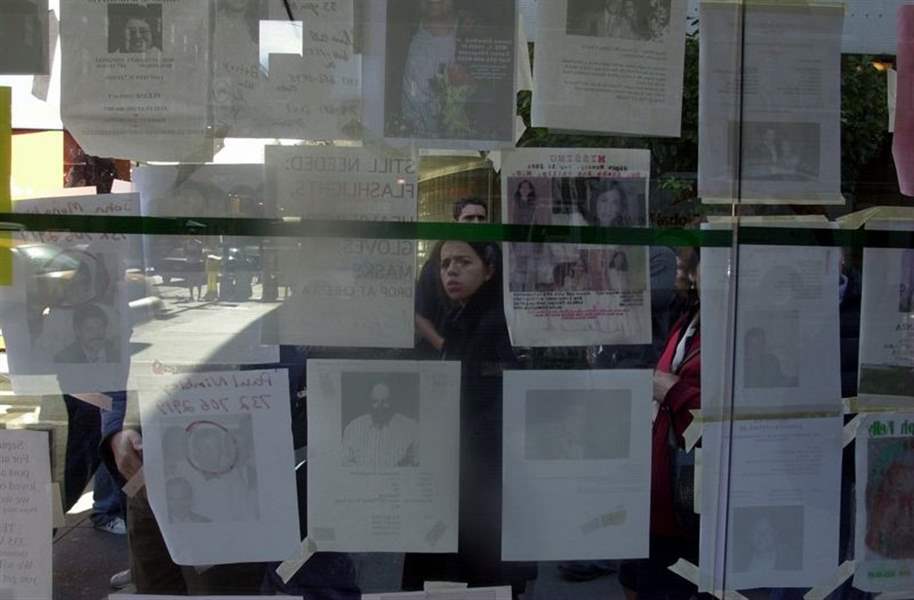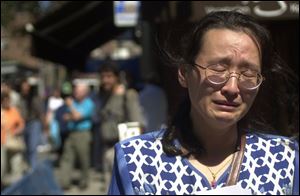
Gap in skyline leaves emptiness in New Yorkers' hearts
9/16/2001
A bus kiosk becomes a wall of 'missing persons' posters near St. Vincent's Catholic Medical Center in New York City. Thousands of people are missing in the rubble of the trade center.

Wen Shi breaks into tears as she tries to find her husband, who worked at the World Trade Center. She was at the New York Armory, where police are establishing files on the missing.
NEW YORK - When the World Trade Center was built, it didn't have many fans.
The 110-story twin towers, which opened in the early 1970s, were expected to give a boost to the New York port's sagging international trade.
But some people complained that its sterile design - tall, white gleaming buildings with lots of windows and little character - didn't quite fit in with Wall Street's more ornate office buildings.
At first, the New York-New Jersey Port Authority had trouble filling the buildings.
But slowly, the offices were rented by some of the nation's largest financial companies.

A bus kiosk becomes a wall of 'missing persons' posters near St. Vincent's Catholic Medical Center in New York City. Thousands of people are missing in the rubble of the trade center.
Lehman Brothers, Morgan Stanley, and Metropolitan Life had entire floors in the buildings.
Cantor Fitzgerald LP, the largest broker of U.S. government securities, had 1,000 employees in the north tower on floors 101-105. The north tower opened in December, 1970.
Offices of the New York Stock Exchange were housed on the 28-30 floors of the south tower, which opened two years later.
The World Trade Center was more than just the twin towers - it was a complex of seven buildings spread over several blocks in the dense financial district of lower Manhattan.
A huge lobby connected the buildings and housed dozens of stores. Underneath the complex were a series of parking garages that dropped seven stories below the buildings. And several subway lines stopped at the complex.
When the towers were destroyed in the terrorist attack, the Marriott World Trade Center hotel fell with them. A fourth building, known as 7 World Trade Center, also collapsed.
Officials are worried that several other buildings in the complex and nearby are in danger of falling.
The buildings eventually won the hearts of New Yorkers and became a major tourist attraction. From the 110th-floor observation decks, people had a panoramic view of the city. The buildings became a visible part of the New York skyline.
Now, they're gone.
“It was a great place,'' said Ron Steiner, who used to work as a waiter in Windows on the World, an restaurant on the 110th floor. “People would come in from all over the world. It was a landmark. I don't know what they are going to do. They should rebuild it.''
No one is sure what is going to happen to the site once the bodies are recovered and all of the rubble is removed. Some have suggested rebuilding the towers. Others say the site should become a memorial for the victims.